Beginning | Portuguese Rule | King Charles II | Seven Islands | Isle | Colaba | Old Woman | Mahim | Mazagaon | Parel | Worli | Vintage Era | Story Behind | Bombay Mumbai Pictures | Jyotiba Phule Market | Taj Hotel | Gateway Of India | Watson Hotel | Contemporary | Conclusion
Mumbai, the wealthiest Indian city, is popularly known as the city of contrasts. From magnificent homes to densely populated slums, Mumbai can surprise you in several ways. This city is an abode to Art Deco and colonial-era buildings. However, there was a drastic change to the scenario depicted by the old Bombay.
You might have heard several controversies about the story of renaming the city to Mumbai. Some citizens still habitually use the names ‘Bombay’ and ‘Mumbai’ interchangeably. But almost everyone knows the political sentiments associated with these names. Let’s delve into the fascinating story of Bombay to Mumbai in pictures.
Also, view old and new Delhi in pictures!
The Beginning Of The Story-
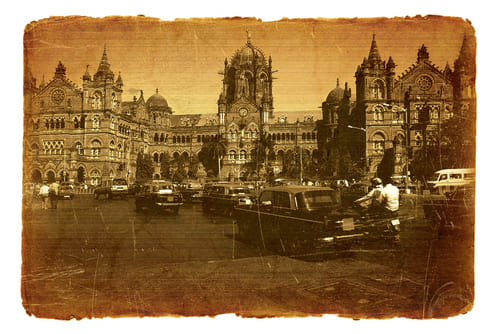
Mumbai, previously known as Bombay, had a combination of 7 islands in the heart of the Arabian Sea. The city’s first inhabitants were Koli fishermen, who contributed much to the development of several villages. Mumbai is named so because of the goddess, Mumbadevi.
The Rule Of The Portuguese-
Greater Bombay was under Muslim, Buddhist, and Hindu rule. But, the citizens of Bombay found hope for development after the arrival of Vasco da Gama in 1498. The Sultan of Gujarat offered seven islands to the Portuguese to get military assistance in exchange.
At that time, Bassein was the capital to control the island for several years. The then-king also converted many citizens to Christianity.
King Charles II Received Bombay As A Portugal Gift-
Charles II, the ruler of England, acquired the islands of Bombay from the Portugal king (in 1661) as a marriage gift. Charles II married the Portuguese princess. However, the East Indian Company took the islands as a lease and fortified them to ensure protection against foreign attack.
Seven Islands United Into A Single Mumbai-
The British developed different causeways to connect islands and undertook many reclamations.
Isle of Bombay-
It was an archipelago of islands connected to develop the modern city. The main harbour was on the island, and it helped with the growth of the town. Starting from Malabar Hill, the island extended up to Dongri to form a natural harbour. The northern areas had other islands like Mazgaon. In the 18th century, the isle united with its adjacent landmasses.
Colaba-
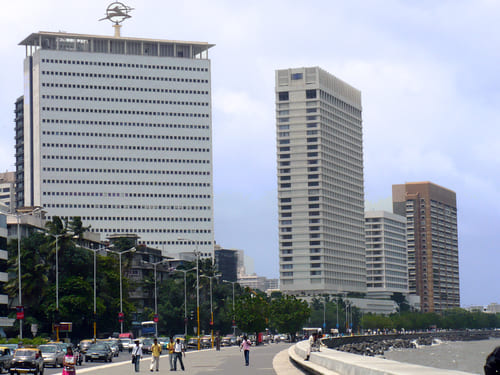
With a seaside promenade, Colaba has a lively scene and was once a part of old Bombay. It stretches from the tall basalt arch, Gateway of India, developed in the 1920s. The walkway has several high-end boutiques and a grand Taj Mahal Palace hotel. The sea-facing tea lounge has made the hotel highly popular. Colaba Causeway has several old cafes, outdoor stalls, and modern restaurants.
The term ‘Colaba’ originated from ‘Kolabhat’, the name in the language of inhabitants, Kolis. However, the present-day Colaba is a combination of 2 separate islands- Little Colaba and Colaba.
Old Woman’s Island-
Also referred to as Little Colaba, Old Woman’s Island was originally the island of the local fisherfolk, Kolis. The Portuguese governed the area during the 18th century, and the British started ruling over it.
Today, this area is trendy in Mumbai because of the presence of prominent hotels, clubs, pubs, and restaurants. However, Colaba Causeway is the primary centre of attraction.
Mahim-
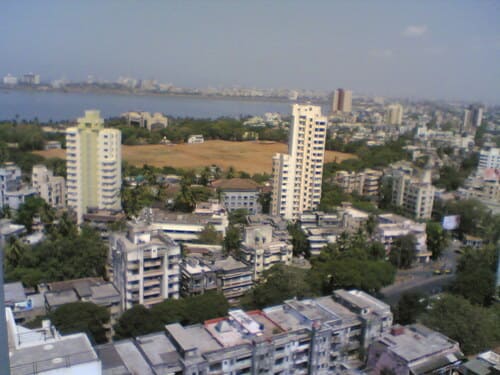
Mahikawati, or Mahim, was once the capital of King Bhimdev, the ruler in the 13the century. He constructed a court of justice and a palace in Prabhadevi. The southern end of the large Mahim Bay is Worli, while the northern part is known as Bandra Reclamation. During the colonial period, the Portuguese constructed a watchtower called Castella de Aguada. There was also the Mithi River draining into Mahim Creek.
Mazagaon-
Mazagaon has a glorious history, and today it is a residential locality. The area includes individual houses and multi-storey apartments. Due to the excellent connectivity and employment hubs, Mazagaon is preferable to several residents.
The term ‘Mazagaon’ originated from Matsya Gram (a Sanskrit word meaning a fishing village). Koli and Agari tribes were the original inhabitants. People from diverse communities and religions reside in Mazagaon. There were several wooden bungalows and stone houses in Mazagaon.
Parel-
Parel was originally a part of the Bhimdev Kingdom. But, later, the Portuguese ceded it to the British in 1661. At that time, Jesuits possessed Parel. In 1867, the first Spinning Mill was established in Parel, and in 1883, Premchand Roychand took it over. Again in 1903, it was named New Islam Mills.
Worli-
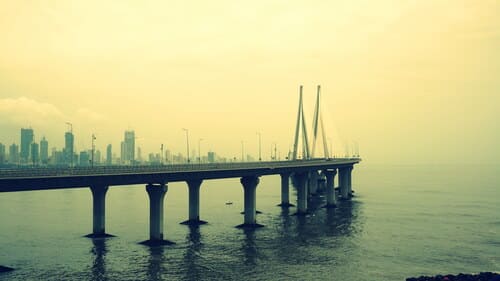
Worli is a peninsula in Mumbai, and the sea establishes a connection with Bandra through the Bandra-Worli Link. The Portuguese ceded the separate island, Worli, and it was connected with some other islands during the 19th century. However, Worli witnessed a terrorist attack in the 1990s.
The Vintage Era With Its Beauty-
During the 40s, citizens chose horse carts for their daily commute. The roads were very neat and clean. Malai Kulfi was available. Chowpatty was highly popular. Special paans and chaat were also delightful.
Again, Marine Drive was a paradise for daily walkers. Another noticeable suburb was Bandra, where you could find bungalows and no tall buildings.
The best picnic spots for foreign travellers and Indian citizens were Khar, Santa Cruz, and Juhu. What’s more, there are wide roads and old heritage buildings in South Bombay. Another source of entertainment is the cricket tournaments held at the most popular Brabourne stadium. Moreover, the fashion show at Mahalaxmi was a program that rewarded Parsi ladies.
From Bombay To Mumbai- The Story Behind The Name-
Old Bombay officially turned into New Mumbai in 1995 when Shive Sena’s nationalist party won elections in Maharastra. The party declared that they would rename the port city to Mumbai (the patron deity of the town). Newspapers, local businesses, and other administrative bodies took steps to adopt the new names.
The Shiv Sena’s party claimed that the name ‘Bombay’ could remind the unwanted legacy of British colonial rule. However, the initiative to rename the city was mainly to strengthen the Marathi identity in Maharashtra. But, the new name did not have any effect on the residents of Mumbai. Gujarati and Marathi speakers tried to stick to their culture. Bombay is the Anglicised name of Bombaim, the Portuguese title.
Bombay To Mumbai In Pictures- Some Old Architecture And Landmarks In The City-
A clear view of Bombay to Mumbai in pictures will make you feel nostalgic. The old Bombay and Mumbai have a unique blend of Art Deco, Indo-Saracenic, Victorian, Gothic, and contemporary architectural styles.
Mahatma Jyotiba Phule Mandai Market-
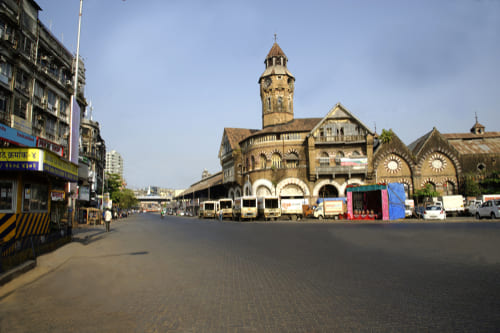
Located in south Mumbai, this market was named after the Municipal Commissioner, Arthur Crawford. The building was constructed in 1869 and was the first market developed in India.
The market covers around 22,471 sq m, and the structure was constructed with red stones, known as Kurla stones.
Taj Hotel-
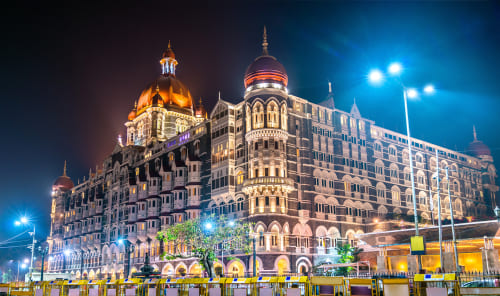
Tata commissioned the Taj Mahal Palace hotel, which became available to guests in 1903. D.N. Mirza and Sitaram Khanderao were the original architects of this resort. However, W. A. Chambers, an English engineer, completed the project. During the first World War, the hotel was used as a hospital. The hotel had a dome made from steel used for constructing Eiffel Tower. Jamsedji Tata sourced the steel from a different country.
The Gateway of India-
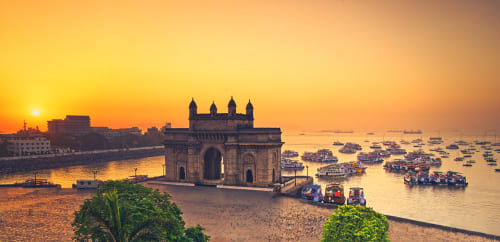
It is one of the prominent monuments in South Mumbai. The Gateway of India reflects an Islamic architectural style with a high arch developed from reinforced concrete and yellow basalt. However, the pillar design shows the style of Hindu temples.
The structure was constructed to commemorate Queen Mary and King George V, who visited the city. The Governor of Bombay, Sydenham Clarke, laid the foundation stone in 1911. As Europeans accessed the country through this location, it is known as the Gateway of India.
Watson’s Hotel-
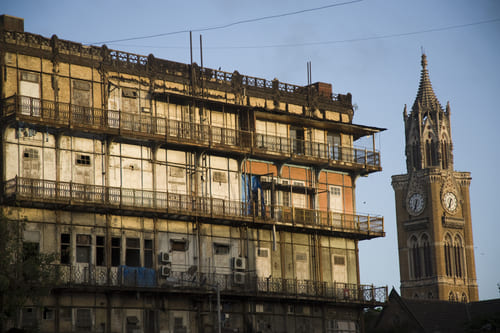
Also referred to as the Esplanade Mansion, it is one of the oldest cast-iron structures, named after John Watson. Rowland Mason, a civil engineer, designed the building by assembling cast iron components. The frame shows a high-profile structure similar to Crystal Palace in London.
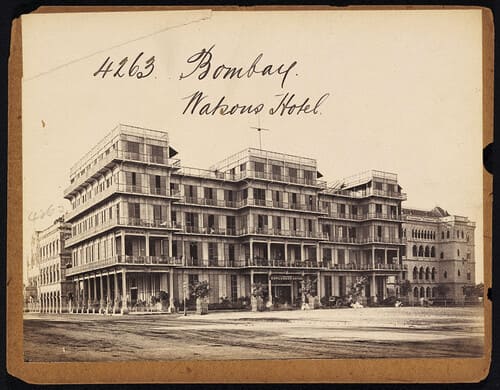
The hotel’s main façade is unique, as it has open balconies. Every floor is connected to the guest rooms. Renzo Piano, an Italian architect, publicised the building. However, negligence caused decay to the building.
Contemporary Architectures In Mumbai-
Being a wealthy city, Mumbai has attracted international investments, so that you can find several high-rise office buildings. Modern buildings in the new suburbs dominate some old parts of Mumbai. Mumbai is the only Indian city with several skyscrapers. The tallest ones of them are One Avighna Park and The Imperial.
Conclusion-
A brief description of Bombay to Mumbai in pictures gives you a clear concept of how the city has transformed its landscape. Although Bombay was renamed Mumbai, the city retained its old charm.
The old Bombay reminds you of the life of Kolis, who used to earn their livelihood by catching and preserving fish. However, the past, as well as contemporary scenes of the city, reflect a combination of tradition, cuisines, fine arts, and music.
Moreover, Mumbai is the financial capital of India. Economic and cultural institutions in the city attract several migrants. The cosmopolitan city is densely populated and has the most prominent billionaires and millionaires.
